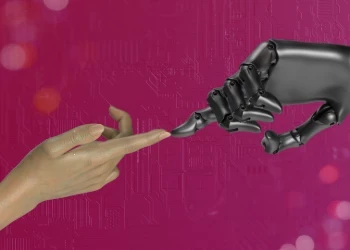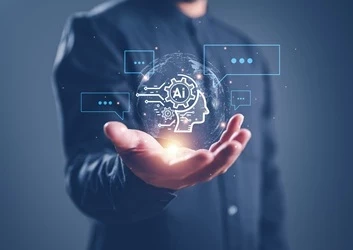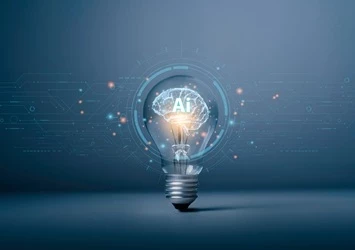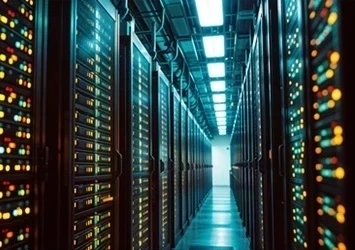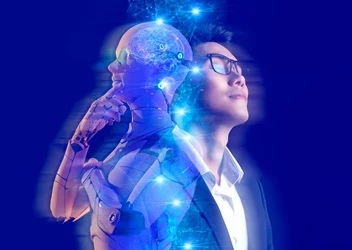AI and Government Modernization: A Look at 4 AI-Powered Government Initiatives
Add bookmark
We talk a lot about the various ways in which businesses are using AI, but what about governments? Just like the corporations we cover, governments all over the world are using AI to optimize processes, boost decision intelligence and create better citizen-facing services.
However, though AI has the potential to significantly transform governments in numerous exciting ways, it can also very easily be misused. Here is a look at 4 government projects that expose some of AI’s most significant benefits as well as, in some cases, potential areas of concern.
The U.S. Internal Revenue Service (IRS)
The pressure on the Internal Revenue Service (IRS) continues to grow as demand for its services skyrockets while its budget is slashed along with the number of tax crime investigators in its employ. To help combat these growing challenges, the IRS has turned to a new ally: artificial intelligence.
Investigating tax noncompliance and fraud requires extensive, time consuming research. Left to humans alone, this process can take months. However, using its new AI-powered suite of tools, the IRS can now perform the same investigative techniques in a matter of minutes.
One of these new tools, dubbed the “ultimate auditor,” uses machine learning (ML) techniques to review and flag potential cases for its officials to investigate. In addition to increasing efficiency and reducing agent burnout, such tools allow tax returns to be processed much faster, a benefit most of us can enjoy.
South Korea Uses AI to Track COVID-19
For public health officials, the coronavirus has proved to be a capricious and puzzling foe. Though we’ve learned a tremendous amount about the disease, tracking, predicting and controlling the spread of the virus has remained incredibly challenging, both scientifically and logistically, to say the least.
In December 2021 the City of Bucheon decided to try a new approach: using AI, facial recognition and thousands of CCTV cameras to track the movement of people infected with the coronavirus. According to Reuters reporting, “The system uses AI algorithms and facial recognition technology to analyse footage gathered by more than 10,820 CCTV cameras and track an infected person’s movements, anyone they had close contact with, and whether they were wearing a mask.”
Though questions pertaining to privacy and ethics abound, this surveillance system could help reduce the burden currently placed on the contact tracing teams, who are said to be severely overworked. In addition, as current contact tracing methods rely on data collected from in-person interviews, this technology-enabled tracking will likely prove to be much more scientifically accurate.
The U.K. Military Uses AI to Gain Situational Awareness
One of the most promising use cases of AI is situational awareness, the analysis and understanding of the surrounding environment as well as the movements of your adversary. By automating situational awareness processes, these AI-powered tools help on the ground soldiers as well as their commanders make better strategic decisions.
In July 2021, U.K. military teams tested the new AI-capabilities during a large-scale NATO exercise. According to a government press release, the team found that “this AI capability, which can be hosted in the cloud or operate in independent mode, [saves] significant time and effort, providing soldiers with instant planning support and enhancing command and control processes.”
Later that year, the U.K. and U.S. militaries were able to prove their respective AI situational tools were
The UAE Deploys AI to Boost Education
As part of its expansive and methodical long-term AI strategy, the United Arab Emirates has plans to use AI to help expand as well as enhance its educational system. The end-goal is to use AI and ML to build personalized educational learning plans.
For example, the United Arab Emirates University (UAEU) has recently launched ‘Future Class,” a classroom that uses AI, IoT and Fourth Industrial Revolution requirements to elevate the learning experience. According to an article in ITP.Net, the project includes features such as automatic registration of students’ attendance through the student geolocation. It also uses AI to assimilate the students’ thinking, feelings and preferences in learning, allowing the teacher to choose the best method to communicate information to the students.”
One of the government sponsored tools UAEU and other educational institutions are rolling out is the Emotion-Affective Domain Mapping System (EADMS). Intended for use in virtual classrooms, the tool uses AI and computer vision to collect facial data from students' webcams during online classes. It then uses Bloom’s Taxonomy, a global standard of behavioral and cognitive learning outcomes, to predict how the student is “doing.” In other words, whether or not the student is paying attention, acting bored, confused, frustrated, etc.
Once again, a number of privacy and ethical questions linger large here. Even if AI can accurately identify and predict a person’s emotion, is that an ethical application of AI? Especially when that person, in this case, is likely a child. If a teacher’s students are overwhelmingly bored, could they be penalized? Is being bored even a detriment to learning?













